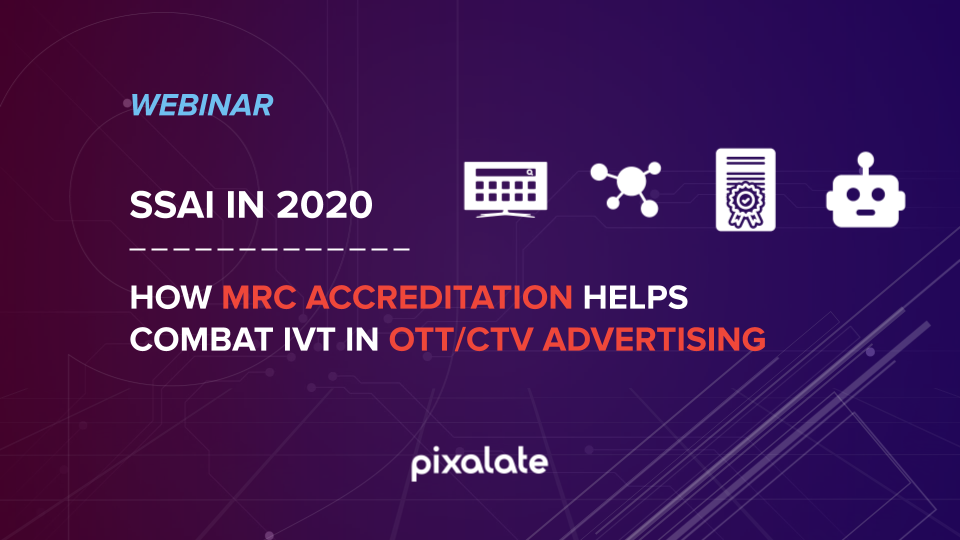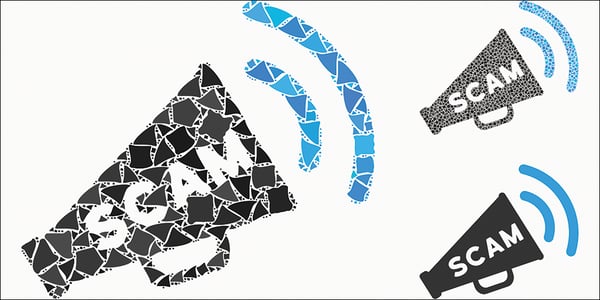
This week's review of ad fraud and quality in the digital advertising space.
Our recent webinar, SSAI in 2020: How MRC Accreditation Helps Combat IVT in OTT/CTV Advertising, outlined what the digital ad industry needs to know about server-side ad insertion (SSAI) in 2020.
This post serves as an executive summary of the webinar, which was presented by Chris Schwarz, Pixalate’s Product Manager and subject matter expert on industry guidance.
You can watch the webinar recording here.

"The whole industry has been turned upside down by revelations about digital brand safety, ad transparency and ad fraud," wrote Maarten Albarda in a MediaPost op-ed. "And still, nothing has changed."
Speaking of the 50% of every ad dollar that actually reaches publishers — per a new ISBA study — Albarda wrote that it "sadly may not reach the actual publishers" in reference to threat of ad fraud, citing Pixalate's recent 'Monarch' discovery as an example.

"The market dynamics of low ad prices and less buying by top advertisers has opened the door to a surge in coronavirus scam ads in programmatic marketplaces," reported Digiday. "Scam ads — ads with creative or domains that deliver false or misleading claims about products with the intention of extracting payment — have jumped to represent 20% of fraudulent activity in April, according to The Media Trust."

CNBC's Megan Graham dove into plagiarized "news" sites that are flooded with ads to rip off publishers. "[I]t’s easy to make money from legitimate advertisers just by setting up a web page," Graham wrote. "That means there’s significant incentive to create sites with not just with low-quality clickbait or A.I.-generated nonsense, but sites filled with outright plagiarized content."
She tested the theory herself and found that "it was shockingly easy."

"Roku was the top connected TV (CTV) platform in the US last year with 84.7 million users, according to our forecast," reported eMarketer. "We estimate that Roku users will make up 32.9% of US internet users and 46.9% of CTV users in 2020."
*By entering your email address and clicking Subscribe, you are agreeing to our Terms of Use and Privacy Policy.
These Stories on Weekly Recaps
*By entering your email address and clicking Subscribe, you are agreeing to our Terms of Use and Privacy Policy.

Disclaimer: The content of this page reflects Pixalate’s opinions with respect to the factors that Pixalate believes can be useful to the digital media industry. Any proprietary data shared is grounded in Pixalate’s proprietary technology and analytics, which Pixalate is continuously evaluating and updating. Any references to outside sources should not be construed as endorsements. Pixalate’s opinions are just that - opinion, not facts or guarantees.
Per the MRC, “'Fraud' is not intended to represent fraud as defined in various laws, statutes and ordinances or as conventionally used in U.S. Court or other legal proceedings, but rather a custom definition strictly for advertising measurement purposes. Also per the MRC, “‘Invalid Traffic’ is defined generally as traffic that does not meet certain ad serving quality or completeness criteria, or otherwise does not represent legitimate ad traffic that should be included in measurement counts. Among the reasons why ad traffic may be deemed invalid is it is a result of non-human traffic (spiders, bots, etc.), or activity designed to produce fraudulent traffic.”

